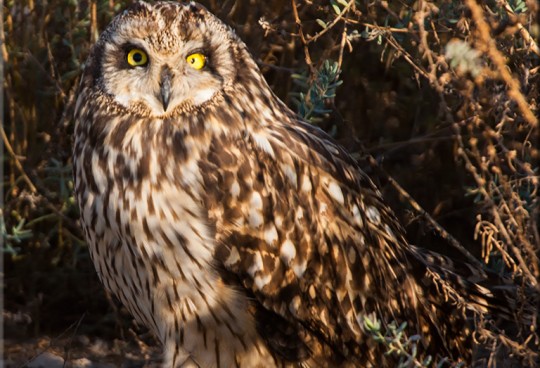Not only is the pied kingfisher the largest bird capable of a true hover in still air, it is also the only kingfisher with all black and white plumage. This distinctive bird has white-spotted, black upperparts and white underparts, with a broad band of black streaks on the upper-breast and a narrow black bar below. There is a prominent white eyebrow and a black eyeband that stretches to the back of the neck, as well as a white throat and collar and a white patch on the wing-coverts. The rump is barred black and white, the iris is brown and the weak, fleshy, feet and legs are black. The male pied kingfisher as in this image is distinguished from the female by the presence of two full breast bands, with the female having just a single incomplete band.
A proficient predator of fish, the pied kingfisher forages from a perch or while hovering, flying low over the water before rising up to ten metres, holding a brief hover, and then plunging into the water and seizing its target in its bill. Because of the pied kingfisher’s unrivalled ability to hover, it does not always require extensive woodland around its habitat for perching and can fly as far out as three kilometres from the shoreline while foraging. After it has captured its prey, the pied kingfisher may swallow smaller fish in flight, or carry larger fish cross-wise in the bill back to its perch, before beating its prey to death and swallowing it whole. The pied kingfisher may also eat insects, frogs, tadpoles and molluscs. The pied kingfisher occupies a variety of fresh and saltwater habitats, including large, inland, slow-moving rivers, estuaries, mangroves, tidal rock pools, lagoons, dams and reservoirs, requiring some water-side perches such as trees, reeds, fences and other man-made objects. It occurs up to altitudes of around 2,500 metres in Africa and 1,800 metres in Asia. It is classified as least concern by IUCN.
![]()






Sorry, the comment form is closed at this time.